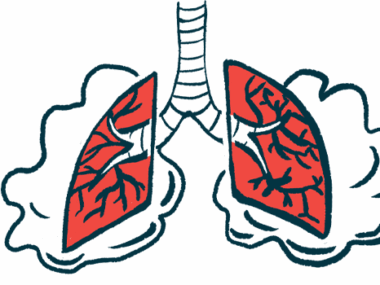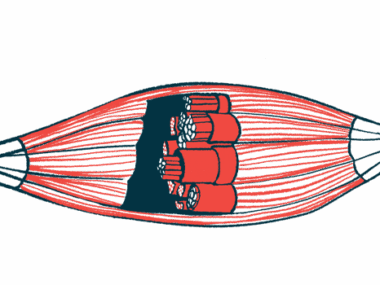Noninvasive spinal cord stimulation may help SMA motor function
2-week course led to better motor function, breathing in SMA type 1, 2 patients
Written by |

A two-week course of transcutaneous spinal cord stimulation (tSCS), a noninvasive method of stimulating the spinal cord using electrical impulses, can improve motor function, breathing, and knee motion in people with spinal muscular atrophy types 2 and 3, a study suggests.
“Further studies are needed to elucidate the reasons for the beneficial effects of spinal cord electrical stimulation on SMA,” researchers wrote in the study “Non-Invasive Spinal Cord Stimulation for Motor Rehabilitation of Patients with Spinal Muscular Atrophy Treated with Orphan Drugs,” which was published in the journal Biomedicines.
People with SMA have insufficient levels of the SMN protein, which leads to the loss of motor neurons, the nerve cells that control movement, in the spinal cord. This causes SMA symptoms such as muscle weakness and wasting.
tSCS is noninvasive method using electrodes placed on skin
tSCS is a noninvasive method that involves placing electrodes on the skin and sending small electrical currents to stimulate the spinal cord.
Researchers in Russia hypothesized that “tSCS could activate intact motor neurons and motor neurons that had been restored after treatment with SMA-specific drugs, leading to a slower decline in motor activity and the development of motor skills.”
To test this hypothesis, the team applied tSCS to 37 SMA patients, of whom 20 had SMA type 2 and 17 had SMA type 3. Of them, 30 were treated with Spinraza (nusinersen), six with Evrysdi (risdiplam), and one with Zolgensma (onasemnogene abeparvovec-xioi). Patients with SMA type 2 were significantly younger and had more severe motor and lung dysfunction.
The patients underwent tSCS in combination with physical therapy. Electrodes were placed on the skin at various locations along the spinal column and hips. Physical therapy with tSCS took about one hour per day for six days a week for a total of about 12 days. Assessments were performed one day before and after a treatment course in the absence of tSCS and then after tSCS.
After treatment with SMA therapies, scores for upper limb motor function, as assessed with the Revised Upper Limb Module (RULM), were significantly higher than zero and tended to be higher among those with SMA type 3 than type 2. The RULM consists of a total of 20 items with a maximum score of 37.
Upper limb motor function improved in 19 participants
After the tSCS, upper limb motor function improved in 19 participants across both SMA subtypes. The increase found in the SMA type 3 group was significant.
Overall motor function also improved with SMA therapies, as indicated by the Hammersmith Function Motor Scale Expanded (HFMSE). Total scores on this scale range from 0 to 66, with lower scores indicating poorer motor function.
A change in HFMSE after treatment was significantly greater than zero in the SMA type 3 group and tended to be higher than zero in the SMA type 2 group. These changes were not significantly different between the two SMA subtype groups. After the tSCS sessions, HFMSE scores for those with SMA type 3 were significantly higher than for SMA type 2.
After treatment, lung function improved in both groups by 3%, as measured by the forced vital capacity (FVC), the amount of air that can be forcibly exhaled from the lungs after taking a deep breath. FVC changes were significantly greater than zero in SMA type 3 patients and tended to be higher in the SMA type 2 group. After tSCS, FVC scores were significantly higher for SMA type 3 than for type 2 patients.
Range of knee motion significantly improved after SMA therapies across both groups, but the difference between the groups was not significant after tSCS.
Based on reports from trainers, adult participants, and parents of child participants, 11 type 2 and 10 type 3 patients gained motor skills after the tSCS course.
Patients with ability to sit showed improvements in test scores after tSCS
After tSCS, RULM scores were significantly greater in sitters (patients able to sit independently) than non-sitters, and HMFSE scores improved only among sitters. Changes in lung function were seen only in patients who could sit. Range of knee motion was significantly enhanced in both sitters and non-sitters.
No relationship was found between age, disease duration, and differences in tSCS outcomes. A weak negative correlation was found between SMA treatment duration and changes in RULM and FVC scores after tSCS in the SMA type 2 group. Other tSCS outcomes did not correlate with treatment duration.
Researchers noted that a control group using a sham treatment was not included in the study because “two weeks of physical therapy alone would not improve motor function in SMA patients.”
“A two-week course of stimulation combined with physical therapy in patients taking [Spinraza] and other [SMA] drugs resulted in significant increases in motor function, improved respiratory function, and decreased contracture in both type 2 and type 3 SMA participants in this group,” the researchers concluded.
“Further studies are needed to elucidate the reasons for the beneficial effects of spinal cord electrical stimulation on SMA patients,” they noted.









